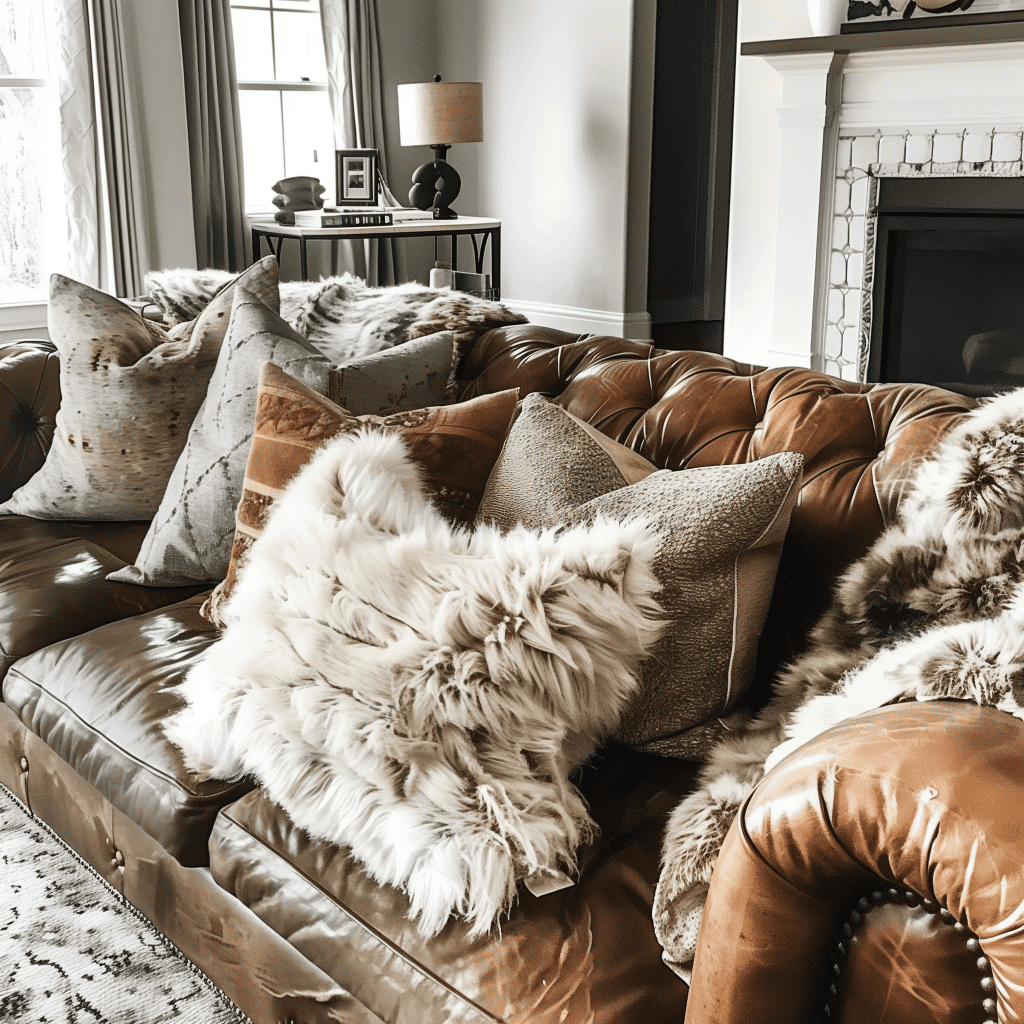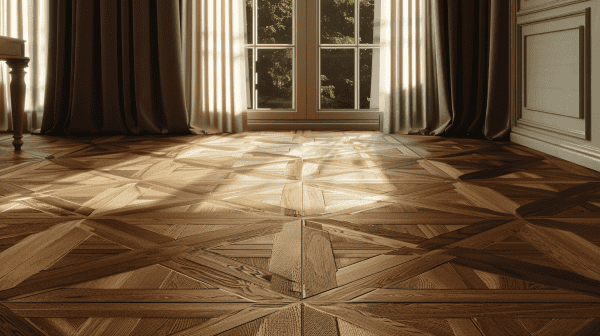Embracing variety in textures can transform your living room from a flat, one-dimensional space to a comforting haven full of depth and warmth.

It's all about creating a tactile experience that invites you to touch, relax, and live in the room.
When you mix and match textures, you weave together a tapestry of comfort that elevates your living space to more than just a visual delight; it becomes an intimate interaction with your surroundings.
Think of your living room as a blank canvas. Incorporating a mix of smooth, plush, rough, and woven textures not only adds interest, but it also increases the welcoming factor tenfold.
Choosing contrasting textures invites the eye to roam, and that movement brings your space to life.
Picture a soft, velvety throw against a leather chair or a rough-textured pillow nestled on a sleek, satin couch. These are touches that make your living room uniquely yours.

The harmony of combining various textures lies in balance and subtlety.
You want your living room to feel like a curated collection of your favorite experiences and styles.
A chunky knit blanket might remind you of cozy winter nights, while a silky throw pillow can evoke a sense of luxury.
It's not just about how it all looks; it's how it makes you feel when you step into the room.
Your living room is not just another room; it's a story of textures that reflects your personality and style.
Understanding Texture in Interior Design
Textures are the design elements that appeal to your tactile and visual senses, and understanding how to use them effectively can elevate your living room.
We may include affiliate links and curated AI content to highlight top design styles.
The Role of Texture
Texture can subtly contribute to the mood of your living room, making it feel either warm and cozy or sleek and modern.
For instance, rough textures tend to absorb more light, creating a sense of warmth and intimacy, while smooth textures reflect light, contributing to a clear, more expansive appearance.
Texture Combinations
When you mix textures, aim for diversity in a controlled manner:
- Complementary Textures: Mix soft throw pillows with a harder leather couch.
- Contrast with Care: Pair a glossy coffee table with a matte rug.

Remember, it's about creating a visually engaging space without overwhelming your senses.
Balancing Textures
To achieve balance, follow these rules:
- Scale and Proportion: Larger patterns can be balanced with smaller ones, provided they're not competing for attention.
- Visual Weight: Distribute textures evenly across the room — avoid clustering too many similar textures together.
- Color Palette: Keep the colors harmonious to help different textures work well together.
Practical Tips for Mixing and Matching Textures
Transforming your living room into a visually interesting space is all about layering different textures in a harmonious way. These practical tips will guide you in selecting, combining, and arranging textures for a cozy and stylish atmosphere.
Selecting Textiles
Begin with a foundational textile that sets the mood—perhaps a comfortable neutral-toned sofa upholstery.
Add contrast with throw pillows in a variety of fabrics like velvet for a touch of luxury or coarse linen for a rustic feel. Ensure a balanced look by varying pillow sizes.

Incorporating Natural Elements
Compliment soft textiles with natural elements like a jute rug or a bamboo coffee table.
The tactile nature of wood grain, stone, and plants adds depth and a grounding presence. Concentrate on the interplay between rugged and refined textures to create a well-rounded environment.
Experimenting with Wall Treatments
Walls are not to be overlooked. Experiment with textured wallpapers or a focal wall featuring exposed brick or decorative wood panels.
These can profoundly influence the room's texture landscape and serve as a backdrop for your textiles and furniture.
Choosing Furniture with Texture
Select furniture that introduces new textures.
For instance, a leather armchair alongside a soft fabric couch creates a compelling contrast. Look for opportunities to include different finishes such as matte, gloss, or metallic on furniture pieces.
Adding Decorative Accents
Finalize your texture mix with decorative accents.
Small elements like a ceramic vase, metallic picture frames, or a stack of books can add subtle complexity.
Think about the tactile quality of these items and place them where they can be both seen and touched to enrich the sensory experience.



